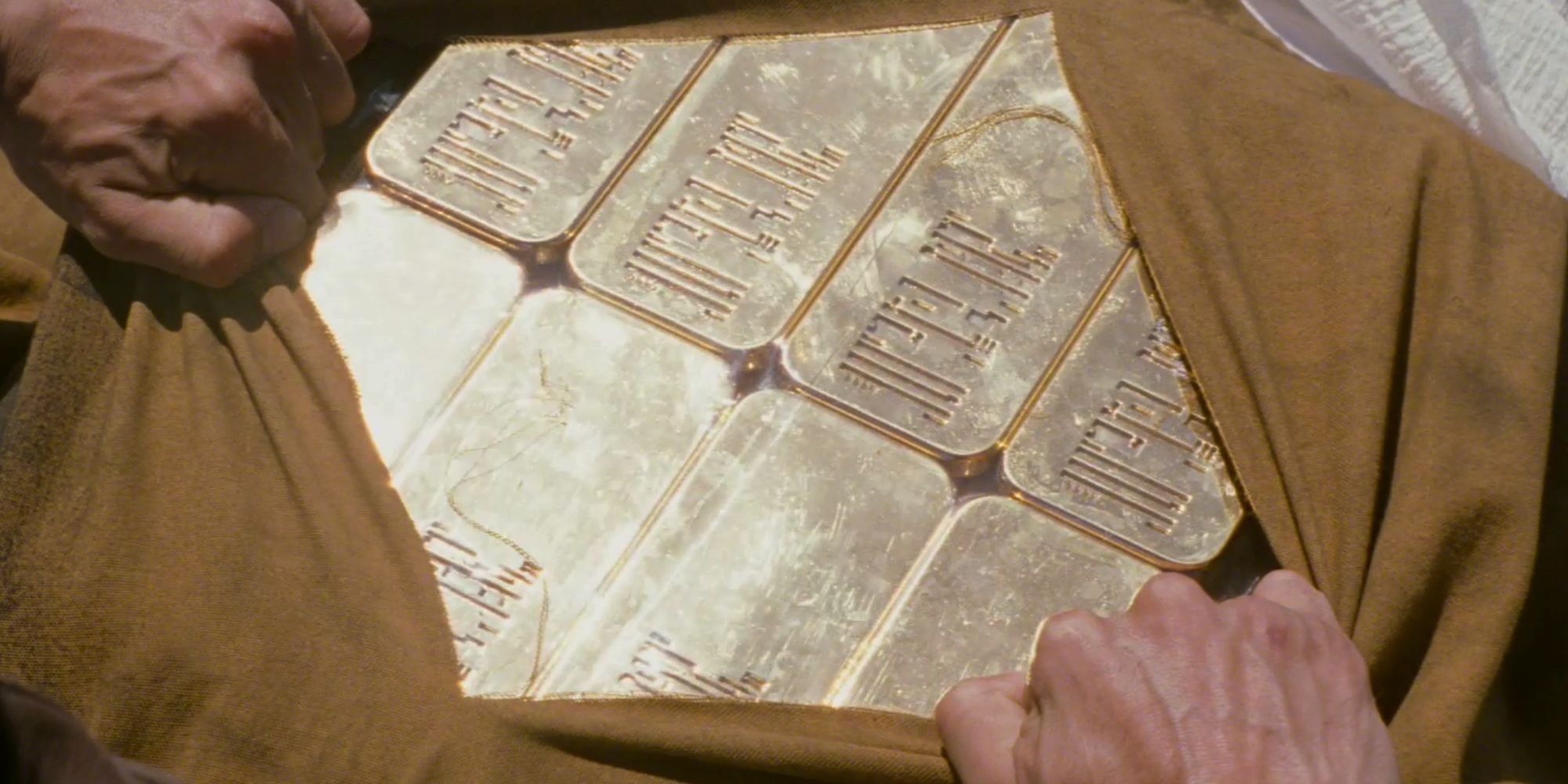Summary
-
Looper
‘s intricate time travel logic and thought-provoking story are made possible by an administrative oversight by faceless characters. - The immersive worldbuilding and in-depth lore of the
Looper
canon contribute to the movie’s rewarding viewing experience. - The risk of a Looper’s escape and the potential for altering history are key elements that drive the plot and create tension in the film.
Looper is a highly thought-provoking adventure that leaves lingering questions about its compelling time travel logic, but the movie’s entire plot only takes place due to an administrative oversight by faceless characters. The Looper canon is impressively in-depth for a standalone story and makes Rian Johnson’s fictional universe very immersive. While the movie’s worldbuilding is rewarding, none of it would have been possible to explore if one key part of Looper lore happened a little differently.
Looper follows the story of two versions of the same man from different points in their life. Both main characters are called Joe, and Looper made Jason Gordon-Levitt look and sound like Bruce Willis to make the illusion more convincing. Like the rest of the movie, Looper‘s ending is very high-concept and the culmination of 30 years within the world of the film. However, the cerebral finale wouldn’t have happened at all if the criminal masterminds mentioned in the film had opted for a more efficient approach.
10 Behind-The-Scenes Facts About The Making Of Looper
Looper is a smart movie but it’s even more impressive to watch after learning about all the interesting details that went into pulling it off.
Looper’s Future Criminals Shouldn’t Have Sent Older Loopers Back To Their Past Selves
The risk of a Looper’s escape has been proven to be a possible outcome
Loopers are part of a criminal organization primarily based 30 years in the future. A Looper is essentially a temporal hitman tasked with disposing of anyone sent back from the future. Dismissal from the position is more macabre than most. When the future mob ends a Looper’s contract, they send the older version of their employee back to the younger version of themselves for execution with a bigger payday than usual. This way, they can enjoy their 30-year retirement in style. While the face of the target is concealed during the hit, Looper shows two instances of this system’s shortcomings.
Looper‘s story is set in motion by Old Seth and Old Joe escaping. The older Loopers each have a gambit to hand when they arrive in the past. Surprisingly, this seems to be a new development for the organization. The escapes are a symptom of a weakness in the criminal structure. Sending back a Looper to be killed by their younger self is undeniably a risky move. The clever use of time travel in Looper means there’s always the chance that the younger man fails or refuses to close his own loop, as evidenced twice early in the movie.
Instead, the powers that be should have continued to randomize assignments, even when closing a loop. Sending a Looper to someone else entirely to be executed makes it much less likely that there would be hesitation when it comes to finishing the job. The escape of both Old Seth and Old Joe spells disaster for both versions of each man, so reducing the chances of it happening is in the interest of the Loopers and their bosses.
Looper Proves That History Can Be Altered
The movie references and even shows alternate timelines
The rare occurrence of a Looper resisting their loop being closed could be due to them misunderstanding how time works. The older Loopers may simply accept their fate when they’re sent back because they remember the moment through the eyes of their younger selves and think it can’t be avoided. However, Looper proves throughout the movie that this isn’t the case.
As well as Old Seth’s gruesome torture scene, Looper shows Old Joe straining to maintain the memory of his late wife as the future starts to change shape. In addition, the Rainmaker in Looper is the future’s main criminal mastermind, but preventing the development of Cid into the Rainmaker is another example of time being changed to the will of an individual. If Loopers knew this, there may have been far more escape attempts during executions.
Making A Looper Close Their Own Loop Could Be An Act Of Mercy
Loopers can retire with the knowledge that they have 30 more years to enjoy
The inefficient procedure for closing loops may have a logical explanation. While the risk would be reduced by assigning the retirement of a Looper to someone else, the Looper in question may never know they only have 30 years left to live. The relationships between the Loopers in the movie generally don’t look too healthy, so there’s no guarantee they’d tell a Looper they’d closed their loop for them.

Looper’s Biggest Mystery Still Hasn’t Been Explained 12 Years Later
Rian Johnson’s Looper creates a detailed world within a relatively short runtime, but one aspect of the movie’s canon was never properly addressed.
By having someone close their own loop, they’re aware their time will come in three decades. In addition, the final and enlarged payday allows them to have a more fulfilling retirement in the lead-up to their death sentence. So, although the system on show in Looper does have its flaws, it’s perhaps a compromise that the mob in the future is willing to live with so their employees get a better deal following their unique job status. Still, without this imperfect routine, the events of Looper would never have happened.
Looper
is available to stream now on Netflix.
Looper
- Release Date
- September 28, 2012
Source link


